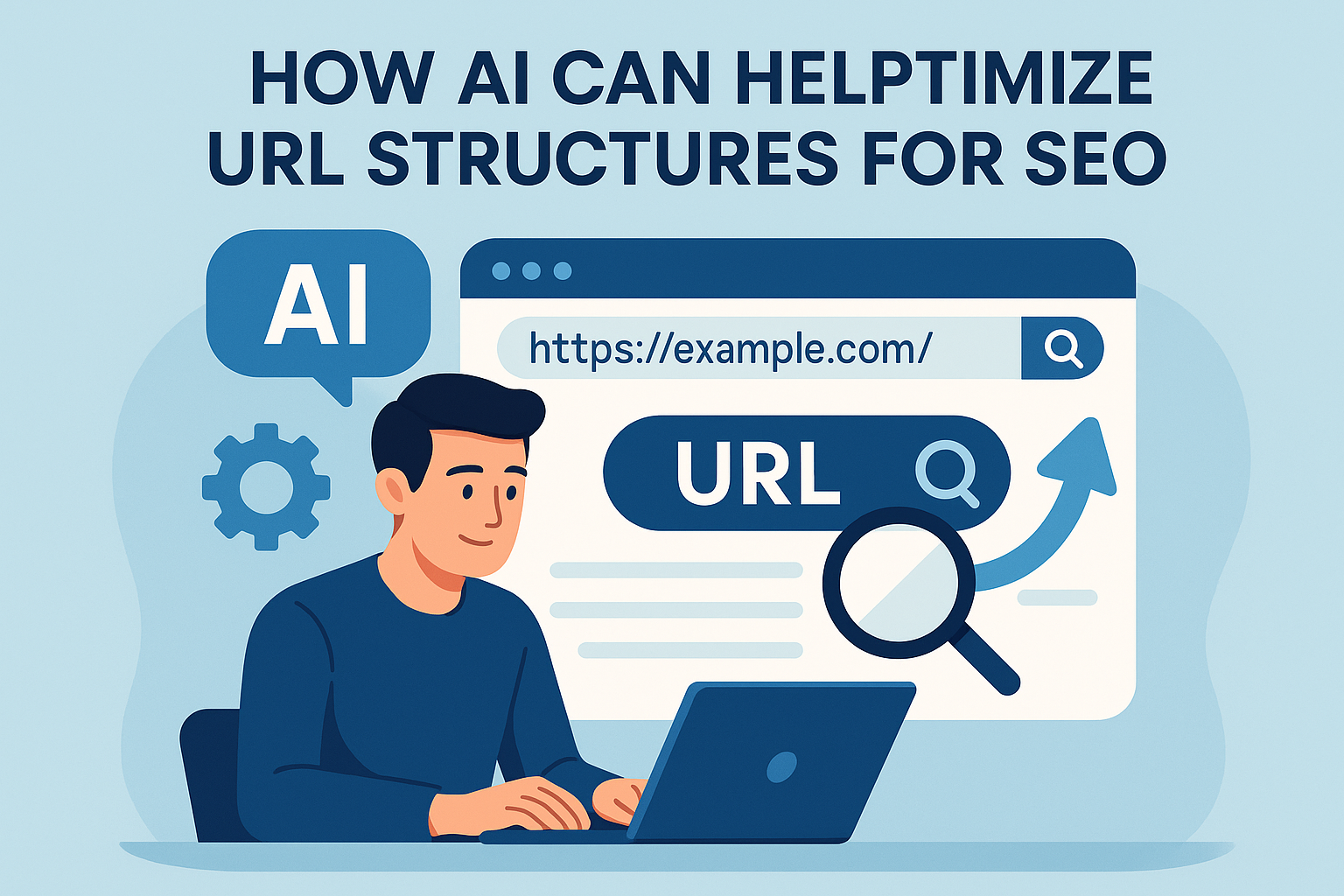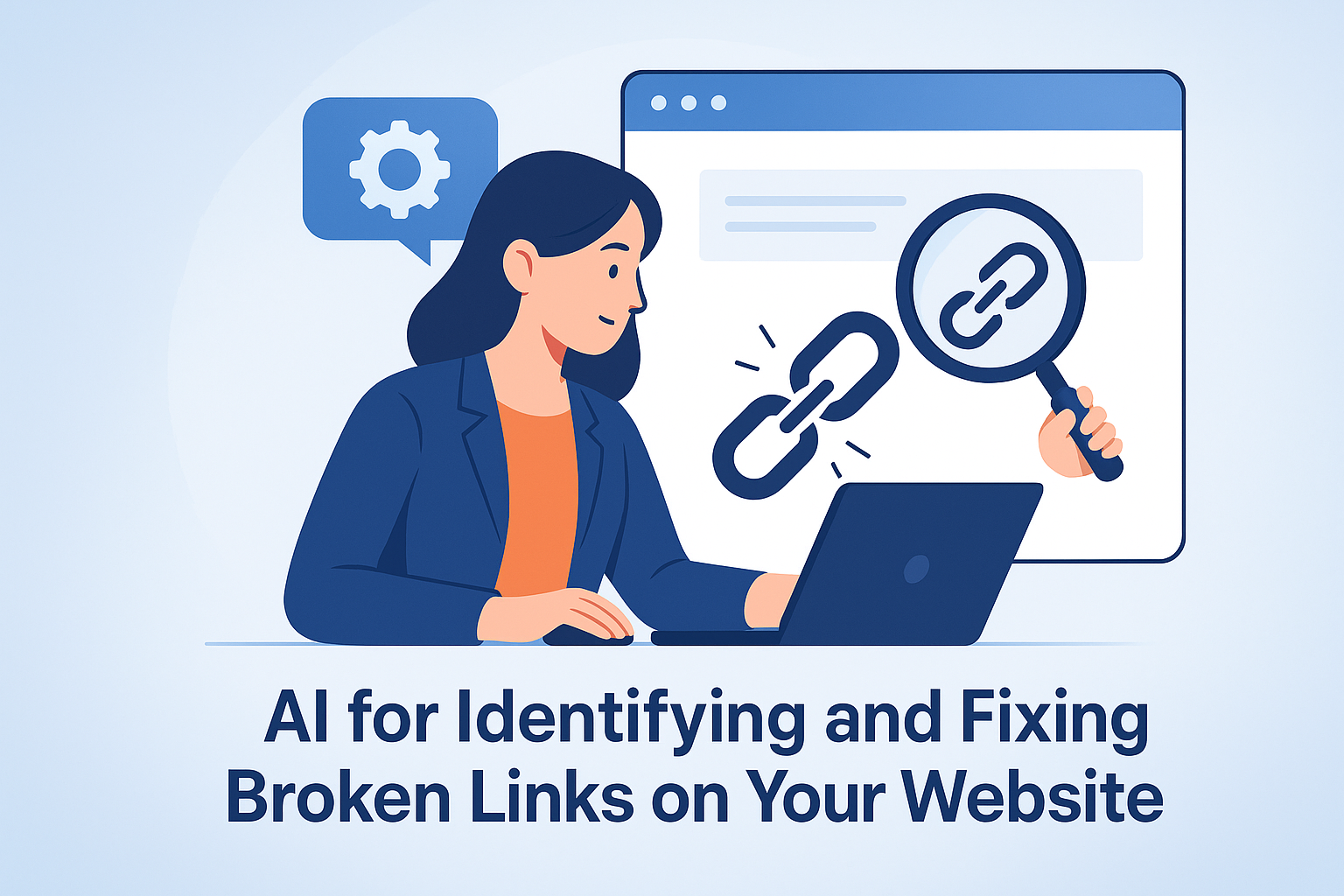If your site loads slowly, shifts while loading, or lags when someone taps a button—Google notices. And more importantly, so do your users.
In 2025, Core Web Vitals remain one of the most critical technical SEO factors impacting rankings, UX, and conversion rates. The good news? You don’t need to be a developer to fix them. With AI, optimizing your site’s performance is faster, smarter, and more accessible than ever.
In this guide, we’ll explore:
✅ What Core Web Vitals are and why they matter
✅ How AI helps identify and fix performance issues
✅ How to use DIYSEO GPT to diagnose and monitor
✅ How to implement fixes with the help of AI and automation
✅ How content, structure, and backlinks also affect Core Web Vitals
What Are Core Web Vitals?
Core Web Vitals are a set of performance metrics Google uses to measure user experience on your website. They became official ranking signals in 2021 and are continuously emphasized in Google’s algorithm updates.
There are 3 main Core Web Vitals:
1. Largest Contentful Paint (LCP)
Measures loading performance.
Target: < 2.5 seconds
2. First Input Delay (FID) → now Interaction to Next Paint (INP)
Measures interactivity delay.
Target: < 200 ms
3. Cumulative Layout Shift (CLS)
Measures visual stability (elements shifting on load).
Target: < 0.1
Failing any of these can lead to lower rankings, higher bounce rates, and reduced user satisfaction.
Why Core Web Vitals Matter for SEO
Core Web Vitals are part of Google’s Page Experience signals, which directly impact:
- Your rankings on both mobile and desktop
- Visibility in Google Top Stories (for news/publishing sites)
- User behavior metrics like bounce rate and dwell time
- Conversion rates and site credibility
Google rewards fast, stable, and responsive websites because users demand it.
How AI Helps You Optimize Core Web Vitals
Fixing CWVs used to require in-depth coding knowledge. Today, AI and automation can do most of the heavy lifting—from analysis to execution.
Let’s walk through how to use DIYSEO GPT and other tools to optimize each metric.
Step 1: Diagnose Core Web Vitals Issues with DIYSEO GPT
Prompt:
“Run a Core Web Vitals analysis for my homepage and top 20 landing pages. Show me which URLs fail and why.”
DIYSEO GPT integrates with Google Search Console’s Page Experience data and third-party diagnostic APIs to deliver:
- A full report of passed/failed CWV metrics per page
- Recommendations tied to each failing metric
- Page-level performance scores with prioritization logic
You’ll know exactly where and why your site fails.
Step 2: Optimize Largest Contentful Paint (LCP)
Common LCP issues:
- Slow server response times
- Render-blocking scripts and CSS
- Unoptimized images and video
- Poor hosting or caching
Prompt:
“List all images on my homepage that impact LCP and suggest optimized file formats, compression levels, and lazy loading options.”
AI solutions include:
- Replacing JPGs/PNGs with WebP or AVIF
- Automating lazy loading of non-critical visuals
- Deferring or async loading of scripts/styles
- Using AI compression tools to shrink file sizes without quality loss
Bonus: Use DIYSEO AI Writer to recreate content layouts that prioritize performance, such as using fewer carousels or removing large background videos.
Step 3: Improve Interaction to Next Paint (INP)
INP (formerly FID) measures:
- Delay between user input and response
- Heavy JavaScript execution
- Poorly optimized event handlers
Prompt:
“Analyze the interactivity bottlenecks on my product page and suggest JavaScript optimizations.”
AI can:
- Flag slow third-party scripts (chat widgets, analytics, ad tools)
- Recommend deferring or async loading behavior
- Prioritize core functionality scripts before secondary ones
Modern AI-based testing tools also simulate real-world usage to predict and prevent interactivity lag.
Step 4: Fix Cumulative Layout Shift (CLS)
Common CLS triggers:
- Ads or iframes loading late
- Fonts or images shifting content
- Dynamic content without size reservation
Prompt:
“Which elements on my landing page cause layout shifts? Recommend fixes using CSS and responsive best practices.”
AI will recommend:
- Reserving space with proper
widthandheightattributes - Preloading fonts to avoid FOIT (Flash of Invisible Text)
- Using
min-heightfor expandable sections - Avoiding animations or transitions that trigger reflows
This reduces visual jank and improves user trust and readability.
Step 5: Build an Ongoing CWV Monitoring System with DIYSEO GPT
Prompt:
“Monitor Core Web Vitals weekly for all pages that receive organic traffic. Alert me when any drop below threshold.”
DIYSEO GPT can automatically:
- Pull performance metrics weekly via Search Console
- Highlight regressions or performance dips
- Recommend new optimizations as site content changes
This ensures your CWVs stay optimized—even as your site evolves.
Step 6: Improve Core Web Vitals Through Smarter Content
Your site structure and content also affect CWVs. Bloated or inefficient design slows you down.
Use DIYSEO AI Writer to:
✅ Write clean, minimalist HTML structures
✅ Avoid heavy third-party embeds and script-laden widgets
✅ Include collapsible FAQs instead of loading full content at once
✅ Optimize layout hierarchy for mobile-first indexing
And use internal linking best practices to reduce bounce rates and improve dwell time—which complements your CWV optimizations.
Step 7: Build Authority Without Slowing Down
Heavy external scripts and backlink widgets can hurt performance. Instead, use DIYSEO Link Marketplace to:
✅ Get text-based editorial backlinks that don’t add scripts
✅ Avoid “link farms” or directories that embed tracking code
✅ Filter placements by topic relevance and DA without compromising speed
✅ Build trust signals that improve user perception and performance rankings
This helps maintain a lean, high-performing SEO presence.
AI Workflow for Core Web Vitals Optimization
| Step | Tool | Result |
|---|---|---|
| Diagnose issues | DIYSEO GPT | CWV breakdown by page and metric |
| Fix LCP | DIYSEO GPT + AI image tools | Faster load times via image and script optimization |
| Fix INP | DIYSEO GPT | Reduced input lag from JS tuning |
| Fix CLS | DIYSEO GPT | More stable layout and visual UX |
| Write clean content | DIYSEO AI Writer | Performance-first blog and landing pages |
| Build fast backlinks | DIYSEO Link Marketplace | Trust and authority without code bloat |
| Monitor continuously | DIYSEO GPT | Weekly alerts and proactive fixes |
Real-World Example: AI Optimization in Action
Site: Health & wellness e-commerce
Challenge: Poor CWV scores = declining organic traffic
Strategy:
- Used DIYSEO GPT to identify LCP issues from oversized hero images
- Compressed and lazy-loaded media with AI tools
- Used AI Writer to refactor product descriptions for better layout hierarchy
- Removed legacy chat scripts hurting INP
- Improved CLS by reserving ad slot dimensions
- Built backlinks via Link Marketplace instead of using tracking-heavy PR links
Results:
- Passed CWV scores on 95% of pages
- 28% increase in organic traffic in 60 days
- 40% lower bounce rate
- Higher CTR from mobile SERPs
Final Thoughts
Core Web Vitals aren’t just technical metrics—they’re a reflection of user experience.
With AI, you no longer need to dig through code or rely on developers for every fix. Tools like DIYSEO GPT help you analyze, diagnose, and monitor. DIYSEO AI Writer lets you publish performance-friendly content. And DIYSEO Link Marketplace lets you grow authority without sacrificing speed.
Faster, smoother, and more stable websites win in SEO—and now you have AI to make it happen.
Frequently Asked Questions
1. What exactly are Google’s Core Web Vitals, and why should I care?
Google’s Core Web Vitals are a set of metrics that assess a website’s user experience in terms of loading performance, interactivity, and visual stability. They’re part of a larger initiative by Google to quantify the aspects of web usability that contribute to an ideal browsing experience. The three primary metrics are Largest Contentful Paint (LCP), which measures loading performance; First Input Delay (FID), which gauges interactivity; and Cumulative Layout Shift (CLS), which evaluates visual stability. Understanding and optimizing for these core vitals is crucial because they now impact Google’s search rankings. If your website provides a poor user experience, it could lead to lower rankings, reducing your site’s visibility and traffic.
2. How can AI assist in improving the performance of my website related to Core Web Vitals?
AI can significantly streamline the process of optimizing your site for Core Web Vitals by providing insights and automation that are beyond manual capabilities. AI tools can analyze vast amounts of data from user interactions in real-time and identify areas where your site falls short on these vital metrics. For instance, AI can determine exactly which scripts or images are causing slow load times and suggest the most effective ways to defer or optimize these elements. Moreover, AI-driven tools can predict trends and potential issues, enabling you to proactively resolve them. This can lead to faster remediation, less downtime, and ultimately, happier users who enjoy a seamless browsing experience. As a result, your site can achieve better rankings due to improved performance.
3. How do AI-driven tools specifically work to enhance loading performance, interactivity, and visual stability?
For improving loading performance, AI tools analyze site data to identify bottlenecks, helping you make data-driven decisions about which resources need compression, deferral, or asynchronous loading. For interactivity, AI can dynamically adjust the structure and loading order of elements to minimize delays in how users interact with your site. This might include leveraging machine learning to prioritize user-visible content over background tasks. As for visual stability, AI can monitor and detect layout shifts, offering solutions like reserving space for images and ads or dynamically adjusting sizes based on real-time data. AI’s predictive algorithms also play a vital role, as they can foresee potential layout shifts and recommend pre-emptive fixes, ensuring that page elements remain stable during loading.
4. Can AI assist in continuous monitoring and adaptation of Core Web Vitals over time?
Absolutely! AI tools are excellent for ongoing monitoring due to their capacity to handle large data streams and deliver immediate feedback. They can continuously track Core Web Vitals and alert you when certain thresholds are approached or exceeded. This allows for real-time adjustments and the implementation of long-term strategies to prevent recurring issues. Additionally, as AI learns from historic data and user interactions, it becomes more adept at predicting future patterns and can adjust site optimizations dynamically, ensuring that your website remains well-optimized as standards evolve. This continuous learning aspect is invaluable in maintaining superior user experience without tedious manual interventions.
5. How soon can I expect to see tangible results after implementing AI-based optimizations for Core Web Vitals?
The timeline for witnessing improvement largely depends on the existing state of your website and the complexity of the optimizations needed. For many websites, using AI-driven tools can lead to noticeable performance enhancements almost immediately, especially in cases where there are obvious bottlenecks. For more intricate or deeply embedded issues, it might take a few weeks of iterative refinement to see significant progress. However, one of the key advantages of AI is its ability to rapidly process data and facilitate changes, which drastically shortens the optimization timeline compared to manual efforts. This means that even complex sites can experience marked improvements in a relatively short period, leading to better user engagement and potentially higher search rankings much faster than traditional approaches might allow.



